My first-ever sleeper train experience was a 13-hour ride across 467 miles of jungle in Thailand and it turned out to be a total letdown
Marielle Descalsota

- I rode on one of the longest train trips in Thailand, Special Express 14, which connects Chiang Mai to Bangkok.
- My first-class cabin with two bunk beds cost 2,906 baht, or around $81.
On a reporting trip to Thailand in late July, I traveled on the Special Express 14, a train journey that starts from the northern province of Chiang Mai and ends in the capital city of Bangkok. It was my first-ever overnight train trip.
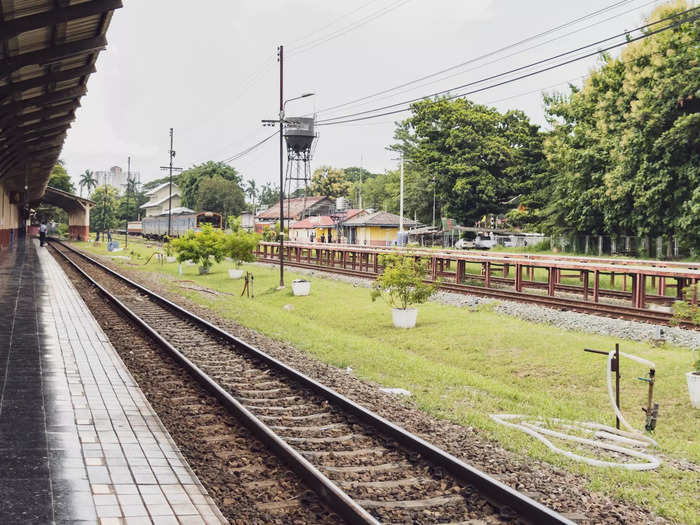
The railway route between Chiang Mai and Bangkok spans 467 miles, making it one of the longest in Thailand. The journey has a reputation among backpackers as a "must-try experience" in Thailand, being described as "lovely" and "a lifetime adventure for Westerners."
Despite having visited Thailand several times in the past few years, I've never taken the cross-country train. I was enticed by the trip's great reviews, so I decided to try it out for myself.
The Special Express 14 takes around 13 hours and 16 minutes to reach Bangkok. It traverses nine provinces and 18 train stations.
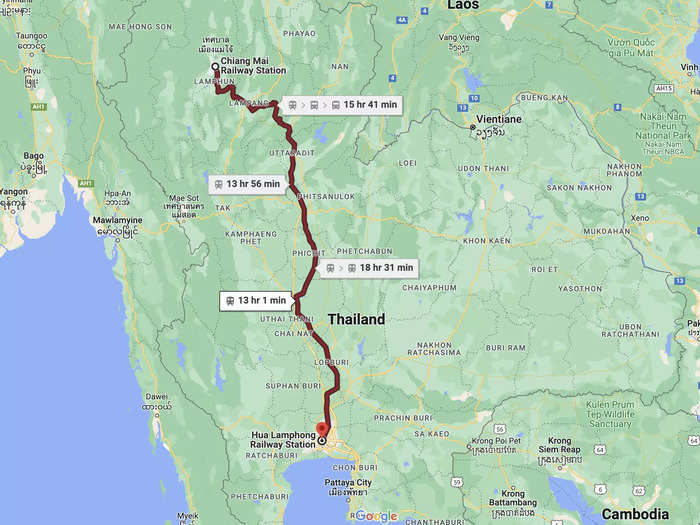
There are a few other train routes as well — the fastest route takes approximately 13 hours, while the longest can take up to 18 and a half hours.
I arrived at Chiang Mai Railway Station at 3 p.m., around two hours before departure. I had spent three days in the province for the first leg of my reporting trip to Thailand.

Chiang Mai is home to more than 1 million people. The province is best known for its mountainous terrain, cool weather, and unique cuisine.
I booked a first-class cabin with two bunk beds for 2,906 baht, or around $81, on the official Thai Railway website.
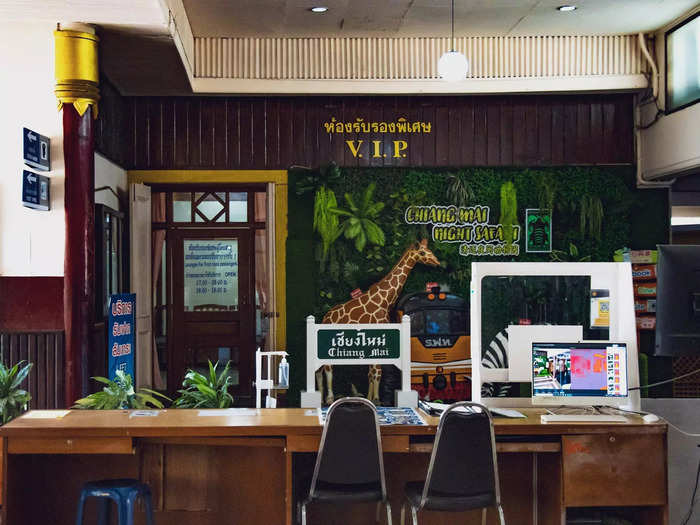
For a better price and more accurate information, I'd recommend using the official Thai Railway website for your booking needs. I initially paid $30 more when I booked through a third-party website. Booking through the official site also allowed me to print my own ticket at home.
First-class tickets also come with access to the VIP lounge, however, it was still not in service during my trip as Thailand had just fully opened up on July 1.
Other amenities like the food court was also closed. I had lunch at a local restaurant near the entrance of the train station instead.
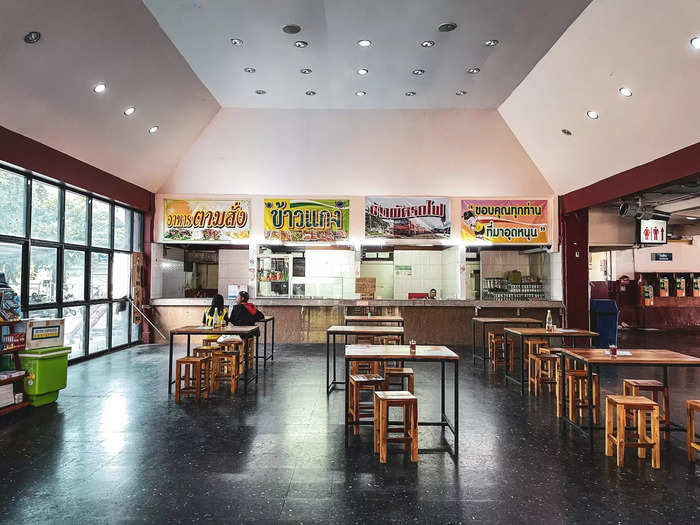
Most eateries in and around the train station, like roadside hawkers and family-owned restaurants, serve Thai food.
I had heard from locals that the train didn't serve food on board because of Covid-19 restrictions, so I made my way to the local 7-11. I bought a ready-to-eat meal, chips, drinks, a pack of gum, a bottle of water, and some local desserts.

I usually have breakfast, dinner, and supper, and it turned out to be a huge mistake not to take along more substantial meals. The snacks didn't do much to quell my hunger. I ended up wishing I had bought some local food from the roadside hawkers to bring on board.
I waited at a nearby cafe as the train station wasn't air-conditioned and it was 93 degrees Fahrenheit in Chiang Mai. With 52% humidity, it felt closer to 104 degrees Fahrenheit, according to Apple's weather app.
Passengers began boarding at around 4.30 p.m. Tourists occupied most of the first-class cabins, while local students took up many second-class seats. I only saw a handful of people in the third-class sections, which were the only passenger cars that were not air-conditioned.
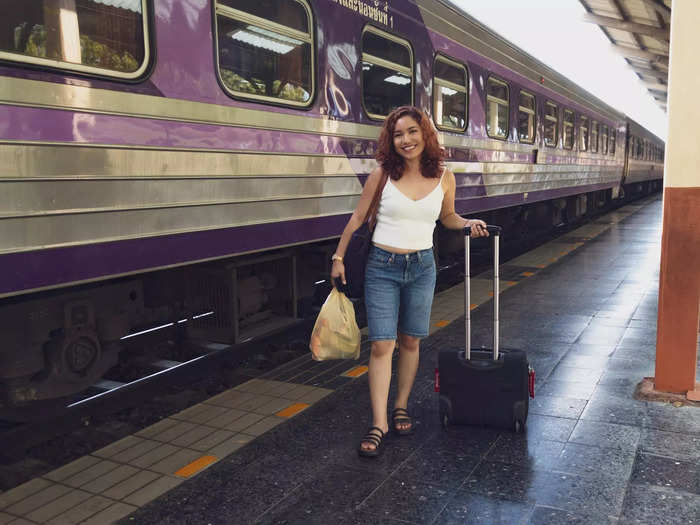
As I had never traveled on a rail train before, I was surprised at how much heat the vehicle emitted. It was uncomfortable for me to take photographs of the train's exterior, or even stand next to it.
I travel as light as I can during reporting trips, especially when I cover the backpacking beat, but other passengers brought along many of their belongings which they stowed in the train's luggage compartment.
There were 12 first-class cabins, all located in the train's second car.
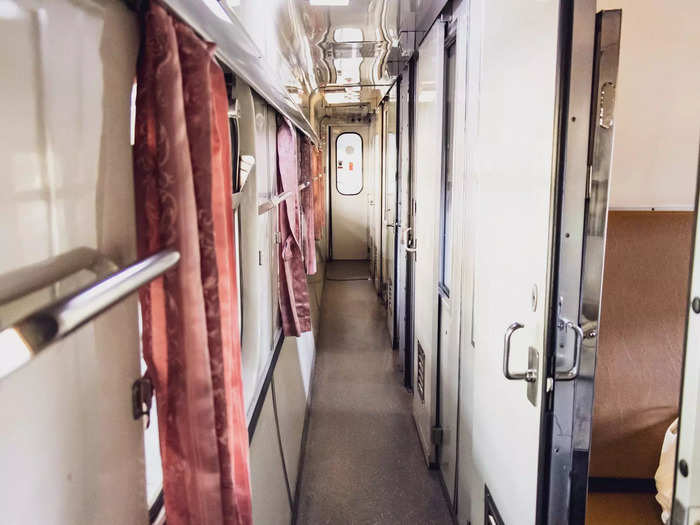
The aisle was narrow and could barely fit my carry-on luggage.
Nonetheless, my first impression of the train was positive — it was clean, it was quiet on board, and the temperature of the air-conditioning was just right.
I'm only 5'1" and the cabin was just big enough for me. There were minimal amenities on board: a convertible leather seat/bed, pillows, and a wash basin.
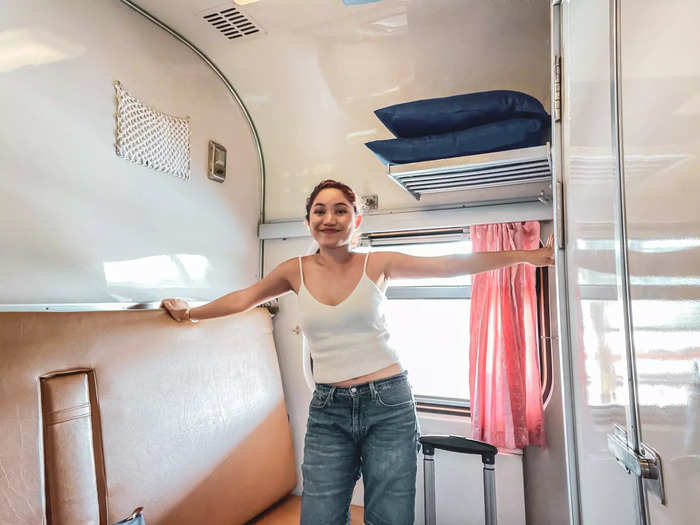
There was little space to stow my luggage, so I was glad I didn't bring much on board.
There was also an electrical socket to charge my devices and a tiny wash basin.
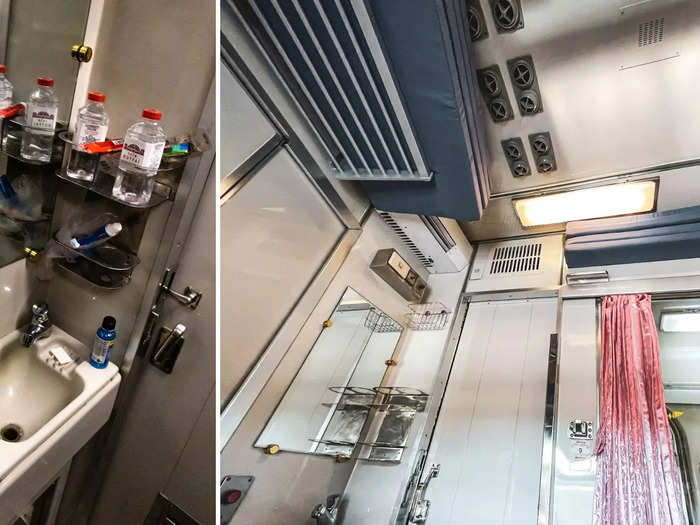
The cabin had all of the basics for an overnight trip. But the dim light fixture (pictured above) was the only light source I had for the night, which meant that the cabin was poorly lit. It was difficult for me to read, write, or do any activities that didn't involve my electronic devices.
The seat could be converted into a double bunk bed. A staff member set up the beds at around 6 p.m., which meant there was even less space in the cabin. I ended up stowing my bags on the upper bunk.
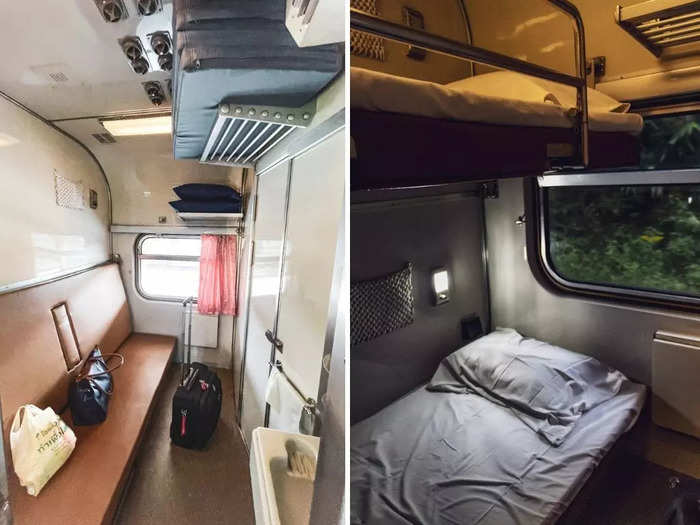
Since I wanted complete privacy, I booked the entire cabin. Unlike Amtrak's private rooms, my cabin didn't come with an en-suite bathroom.
I could feel every jerk and jolt the train made and hear its horn honking throughout the night, but I still ended up sleeping just fine because the bed was cozy and comfortable enough. I preferred sleeping on the lower bunk as it shielded me from the dull cabin light.
Since Chiang Mai goes dark at around 7 p.m., I only had two hours to enjoy the views outside before the sunset. The train ventured into Thailand's wilderness, where I saw an abundance of rice paddy fields.
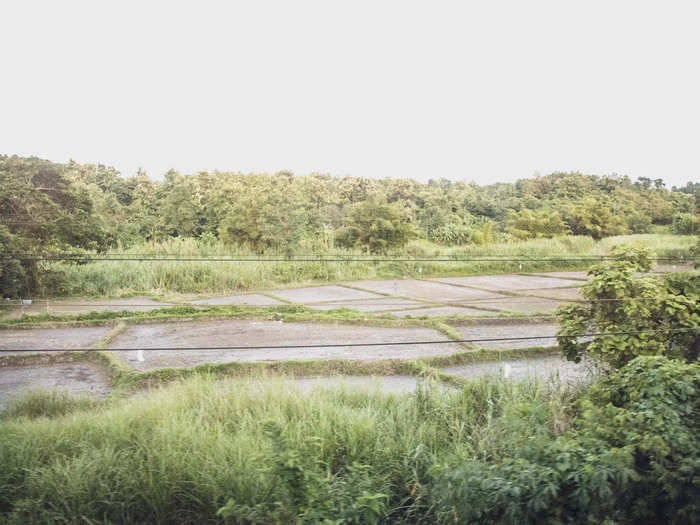
According to the Observatory for Economic Complexity (OEC), Thailand is the second-largest exporter of rice in the world, exporting around $3.88 billion worth of the grain in 2020. The country exported $726 million worth of rice to the US, making the US its number one export destination in the same year, per OEC.
The train journeyed through rural towns in the north of the country, where houses peeked through dense foliage. It was a different side to Thailand, one that many tourists don't get to see.
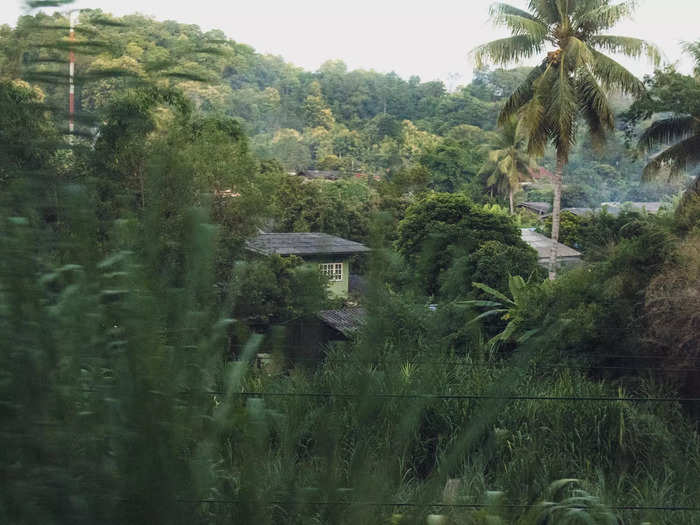
The train also meandered along winding rivers during golden hour — it was a stunning sight. After a brief stop at Nakhon Lamphang, the rest of the trip quickly slipped into darkness.
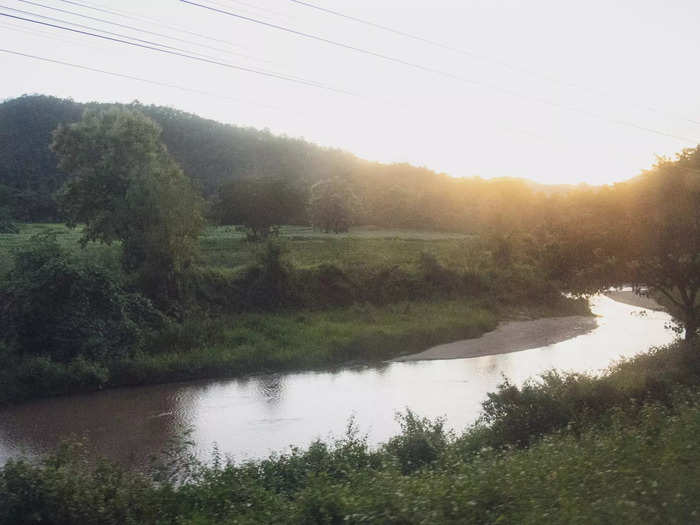
After eating dinner, I made my way to the bathroom at the back of the car to get ready for bed. But the toilets weren't the cleanest — I could smell the stench of urine even before opening the doors.
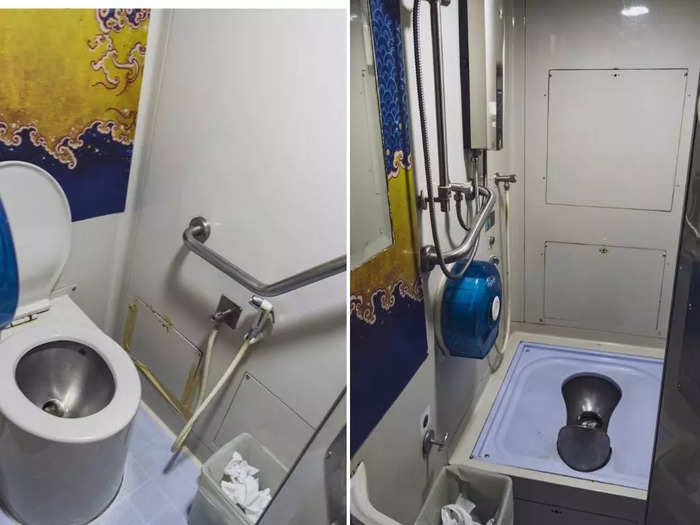
I found it too uncomfortable to shower on the fast-moving train right next to a foul-smelling squat commode, so I retreated to my cabin and washed up at the basin instead.
I expected the train to stop at stations where there would be vendors selling trinkets and food, like on the Trans-Siberian Railway or even certain Amtrak routes, but many stations remained desolate throughout the night.
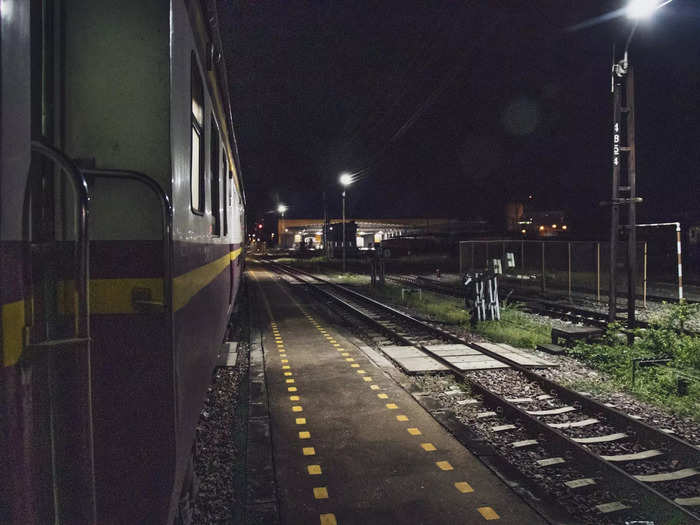
It was also difficult to predict when the train would leave — while there are schedules online listing the train's departure time at each stop, these weren't always followed. Before the train reached Ayutthaya, the train would start chugging away after just a few minutes at a stop — sometimes without even sounding the horn.
I took the risk and strolled around at one such stop and almost got left behind — it would have been near impossible for me to get back on track as the stations were in rural areas with little to no cell network or Wifi.
As I had spent around 10 hours of the trip in darkness, and half of the time without Wifi, I decided to go to bed. I woke up at around 4.30 a.m. when we were already in Ayutthaya. It was a very different landscape from the countryside, with busy roads and temples located right next to modern buildings.
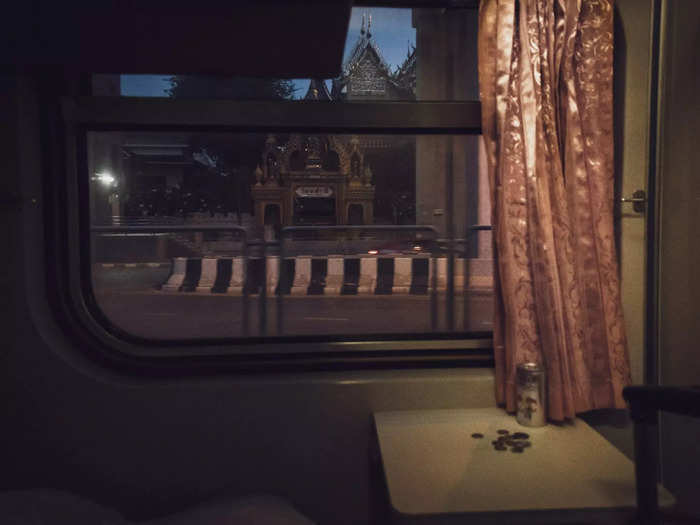
After crossing Pathum Thani, the train finally reached the outskirts of Bangkok. Instead of the picturesque cityscape tourists are used to, the train took me past some surprisingly squalid conditions.
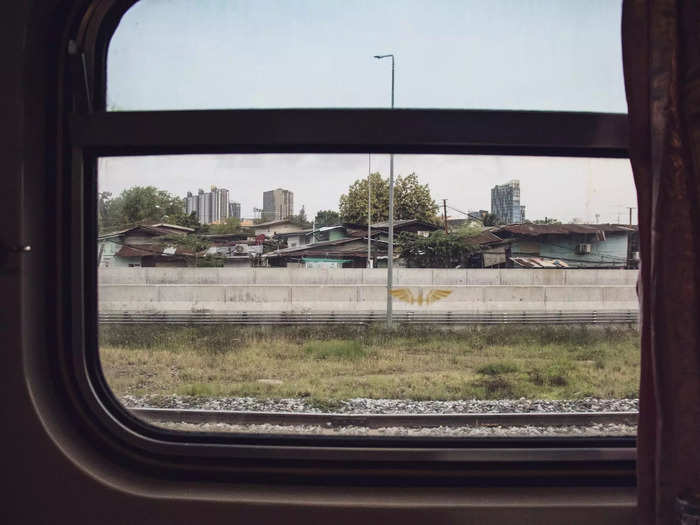
The train crossed into towns with poorly-built houses and dilapidated buildings. According to documentary photographer Sam Gregg, parts of the state railway lines are located right inside some of Bangkok's biggest slums like Klong Toey.
It reminded me of my birthplace — Manila, the capital city of the Philippines — where skyscrapers and slums coexist along sprawling highways.
Right before reaching my final stop, Bangkok Railway Station or Hua Lamphong, a staff member put the bunk bed back into a seat again.
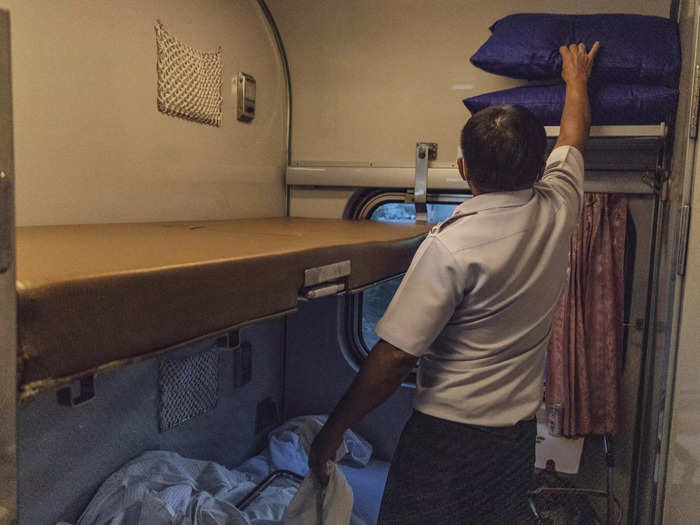
He told me that hot beverages like tea were served on board, but I had to pay a small fee. I decided to hold out until I reached my destination as I was craving a full local meal for breakfast.
I finally arrived at Bangkok Railway Station at around 7 a.m. It was noisy and bustling — exactly how I remember one of my favorite cities in the world.
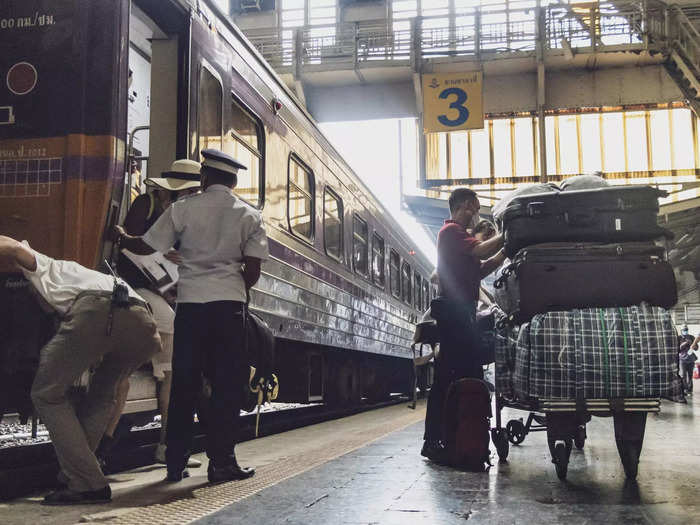
Bangkok is one of the world's top travel destinations with almost 40 million visitors in 2019, so it's no surprise that the station was packed with people. Some were waiting to board trains, while others were busy retrieving their heaps of luggage.
While the Special Express 14 was certainly memorable, it's not a trip I'd do again. However, that doesn't take away from the fact that it's great for locals looking to travel to the capital city in a cost-effective manner.
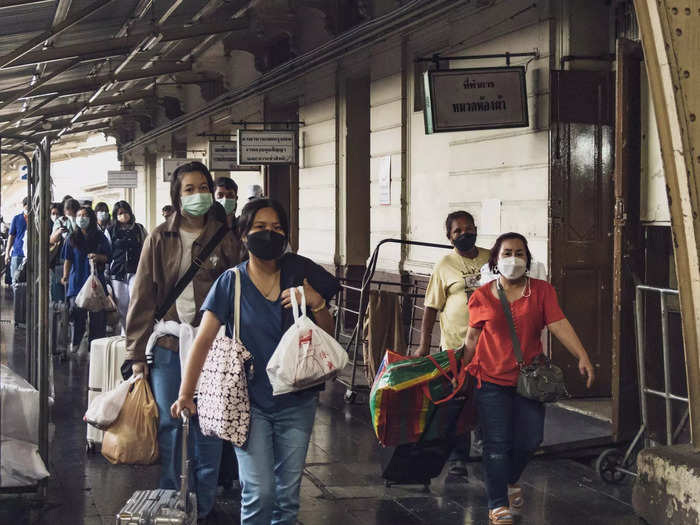
The journey wasn't as picturesque as I imagined, and without any food served on board, it was at times an uncomfortable experience. I found myself wishing the train would reach Bangkok sooner rather than later.
But Special Express 14 isn't exactly a trip for tourists. Most locals opt for second-class tickets, which cost only around 770 baht, or $21, so it's a great way for them to travel especially if they're looking to avoid the additional baggage costs of flying.
Overall, I'd say taking a day train trip across Thailand would be better for tourists looking to catch a glimpse of the country's provinces and natural landscapes. I'm glad to have tried the overnight journey once but in hindsight, it's not a trip worth going out of my way for.
Popular Right Now
Popular Keywords
Advertisement